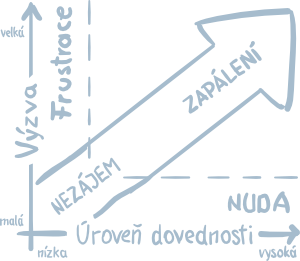Appropriate challenge: tasks for each child at their level
Our textbooks present problems with varying levels of difficulty. Always allowing weaker pupils to solve some problems successfully precludes any feelings of anxiety and fear of future mathematics lessons. At the same time, we constantly provide the best pupils with further challenges, to prevent them from experiencing boredom. The teacher does not overburden these pupils with tasks. Instead, he or she assigns tasks that will keep the children motivated. The teacher chooses the tasks according to each child’s needs.
Differentiation based on difficulty
The problems in our textbooks are differentiated according to how difficult they are: for a problem that has got parts a) to f) we would like part a) to be solved by every pupil in the class without any help from classmates, part b) to be solved by about 90% of pupils, part c) by about 75 %, part d) 50 %, part e) 25 % and part f) perhaps only 10 %, or just one child in the class. The underlying idea is that each pupil is presented with an appropriate challenge. Weaker pupils will always solve some problems successfully, which will keep them from experiencing anxiety and fear. At the same time, even the best pupils are constantly challenged, not bored. Avoiding fear and boredom in mathematics lessons is our primary concern.
For the weaker as much as for the stronger

It might seem that the stronger pupils make many discoveries, while the weaker ones are simply out of luck. The teacher plays a crucial role here. A good teacher recognizes that what for some pupils may be obvious, the weaker ones need to discover for themselves. The teacher will praise such discoveries and, by giving praise, he or she implicitly shows what mathematics is about. We want our teachers to praise pupils for thinking and ideas, and to share the joy of discovery with their pupils – discoveries appropriate to those individual pupils’ abilities.
Gifted pupils are of great concern to us. To let them accept boredom is a waste, not only of their individual potential, but also the potential of our entire community. We believe that gifted students need to find challenges in our textbooks and to be constantly engaged in an intellectual activity. Our teacher’s book contains problems that will give these pupils opportunities for ongoing development.

Respecting the child’s developmental stages
Our endeavor is informed by the field of psychology in order to create appropriate “steps up” in terms of the difficulty of different levels of problems. What is difficult for children is often perceived as simple to adults. As an example, think about solving a word-problem using an equation with an unknown. The decision to work with an unknown number requires a great amount of courage, and a child is not able to make this decision without first acquiring a lot of experience. Children are sometimes pressed into prematurely accepting the adults’ way of doing or understanding things. On the other hand, children at primary level are known to be able to contemplate things that adults have never considered, and which the adults might think too complex for the child’s age.
Self-assessment
We recommend that teachers create so called graded assessments. Such tests should contain similar problems at various levels of difficulty (e.g. three problems from one mathematics environment, marked as “easier”, “medium”, and “difficult”). Children will decide on the appropriate level at their own discretion. This means that they will assess themselves, i.e. they will practise self-assessment. Our goal is to enable each child to fully develop their character in all its complexity.
